Just getting started? Don’t know the difference between an RRSP, RESP, TFSA and other accounts? Overwhelmed by big purchases? Anxious to insure yourself and your business? Experiencing major life transitions?
Ready to take control of your financial future?
Whatever your situation, you’ve come to the right place!
- Know your accounts and investments
- Have the insurance you need
- Make and follow a financial plan
- Learn about the value of financial advice
And then do yourself and your finances a favour:
Connect with a financial advisor to discuss your wants and needs. You won’t regret it!
Accounts
There are two common types of accounts: bank accounts and investment accounts. Investment accounts are usually more complicated.
Within investment accounts there are government registered plans and accounts and there are non-registered accounts. Registered accounts have benefits and limitations imposed on them by the Canada Revenue Agency (CRA). Registered accounts are popular because they allow you to grow your savings tax-free until withdrawal. Non-registered accounts can be used in conjunction with other types of investment accounts. They also tend to have fewer rules. In most cases you pay income tax on deposits to non-registered accounts, but you do not pay tax on withdrawals.
So which do you chose?
The first thing you need to consider is your end-goal. If your end-goal is long term, and you want to save a relatively large amount of money, you should be considering taxes not only when you deposit money into the account, but also on growth, and at the time of withdrawal. If this is the case, you may want to discuss registered accounts and how they fit into your larger financial plan with your advisor.
Non-registered accounts are usually used for very specific planning purposes like joint ownership of investments or in the case that you’ve maxed out the contribution limit of your registered accounts. Again, a financial advisor can help you work through this decision.
Registered accounts include:
Registered Retirement Savings Plan (RRSP) These are used to save for retirement. They defer the tax on investment income in the account until you are older and in a lower tax bracket. You get the most out of these accounts when you have a higher income at the time you are contributing then when you’re withdrawing.
Registered Education Savings Plan (RESP) These are used to save for a child’s education. They may enjoy government payments that support saving for that purpose.
Tax-Free Savings Account (TFSA) These are flexible all-purpose savings accounts. You can withdraw money from them anytime without penalty. Income earned in the account is tax free.
Non-registered accounts include:
Chequing Accounts These are your every-day banking accounts. They usually have lower transaction fees than a savings account.
Savings Accounts These go hand-in-hand with chequing accounts. A savings account is an account that pays interest on the money you deposit, also known as the principal. The value of your savings account really depends on your goals and your interest rate.
Joint Accounts You need more than one person to have a joint bank account. They offer the same features as personal chequing or savings accounts, however two or more people have access to it. Keep in mind that you’re responsible for any transactions made by the other account holder(s).
Non-registered Investment Accounts (open accounts) These are investment accounts with very few (if any) limitations. When you’re starting out, there are very few good reasons you would have a non-registered account. Unless there’s a reason you need to have a joint investment account with someone, or you aren’t a Canadian resident, non-reg accounts are usually where you put the money you can’t fit in registered plans.
Be smart, shop around
The Government of Canada has developed a free “Account Comparison Tool” which allows you to compare features for different chequing and savings accounts, including interest rates, monthly fees and transactions.
Make sure to read about the benefits and uses of these accounts. Talk to an advisor if you’ve got questions.
The simplest way to open an account is to talk to your bank’s customer service representative.

